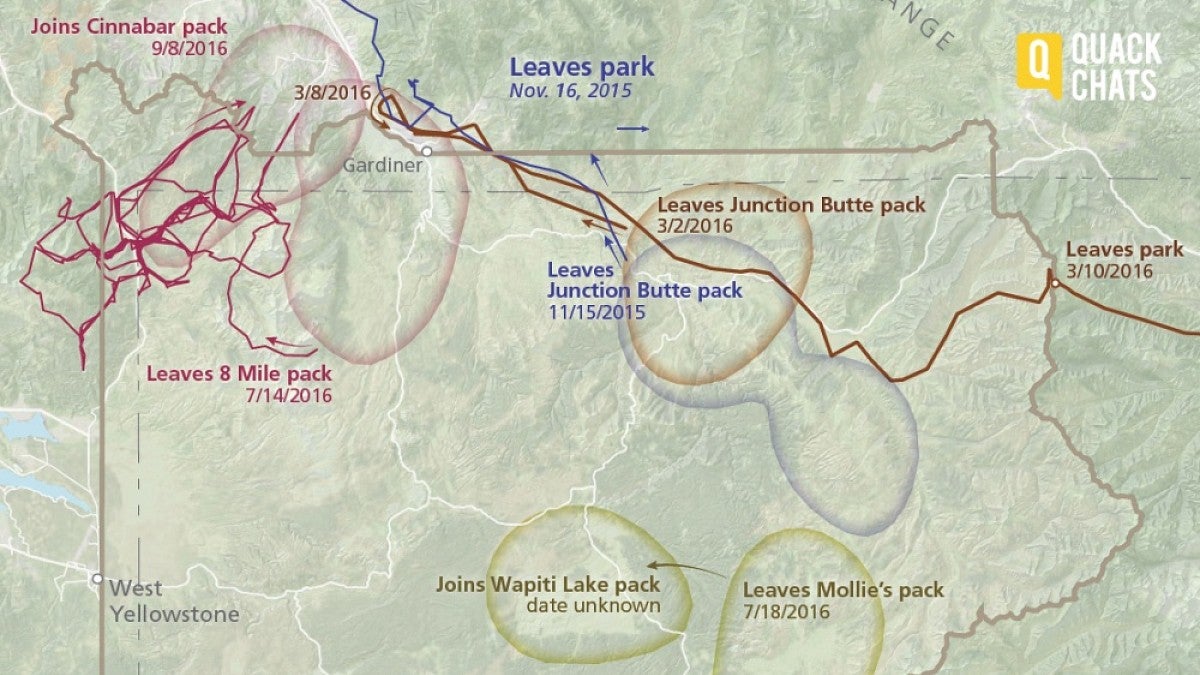There’s no shortage of wild activity in the greater Yellowstone area: Lone wolves roam the vast landscape, herds of bison migrate as the seasons change and forests blacken after wildfires tear through.
And UO geographer Jim Meacham has spent the last two decades capturing that immense wildness through a series of maps and data-rich graphics.
“Our goal is to create maps that tell powerful stories and convey the importance of Yellowstone for wildlife and the ecosystem,” said Meacham, who has collaborated with wildlife biologists, geologists, historians and many other experts and researchers to publish a pair of atlases about the region.
Meacham will discuss his work at a Quack Chats pub talk, “Mapping the Wildness of Yellowstone,” Wednesday, Feb. 6. The talk begins at 6 p.m. at the Ax Billy Grill & Sports Bar at the Downtown Athletic Club, 999 Willamette St. in Eugene. It is free and open to the public.
A cartographer and atlas designer, Meacham runs the UO’s InfoGraphics Lab, where he’s helped spearhead the publication of several atlases, including the two that cover Yellowstone, one that focuses on the national park and another on the migratory patterns of Wyoming’s hooved mammals, like elk, deer, moose, bighorn sheep, mountain goats and bison.
The Atlas of Yellowstone, which Meacham co-authored with UO geographer Andrew Marcus, uses a colorful array of maps, graphics, photographs and words to cover more than 100 topics related to the wildness of Yellowstone, like glacial melt, climate change and vegetation. Published in 2012, it was the first atlas of a U.S. national park.
Meacham is currently working on an update to the text to reflect new data and research, including greater use of radio collars to track animal movements. He’ll share some of this material during his talk Wednesday night.
The patterns of animal movement is the subject of the most recent atlas that Meacham contributed to. Wild Migrations: Atlas of Wyoming’s Ungulates, was published last fall as a collaboration between UO cartographers and University of Wyoming wildlife biologists. It documents the journeys that these animals embark on, alongside the barriers that they encounter as they travel across Wyoming’s plains and mountains.
“This project can enhance conservation efforts by helping people gain a deeper understanding of the importance of these migration corridors, how animals are moving and what potential or existing threats exist.”
Meacham will share a selection of maps and stories from both of these projects at his talk.
To learn more about upcoming Quack Chats, see the Quack Chats section on Around the O. A general description of Quack Chats and a calendar of additional Quack Chats and associated public events also can be found on the UO’s Quack Chats website.
—By Emily Halnon, University Communications


